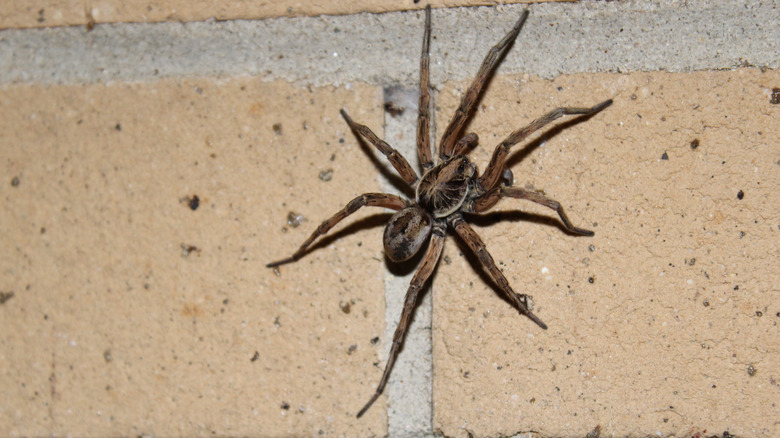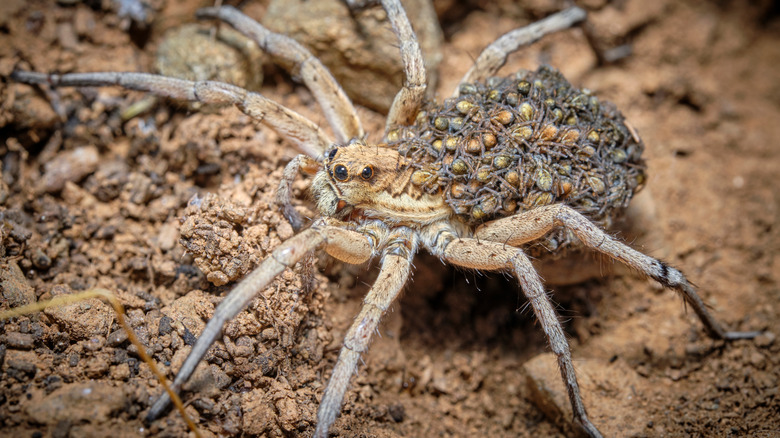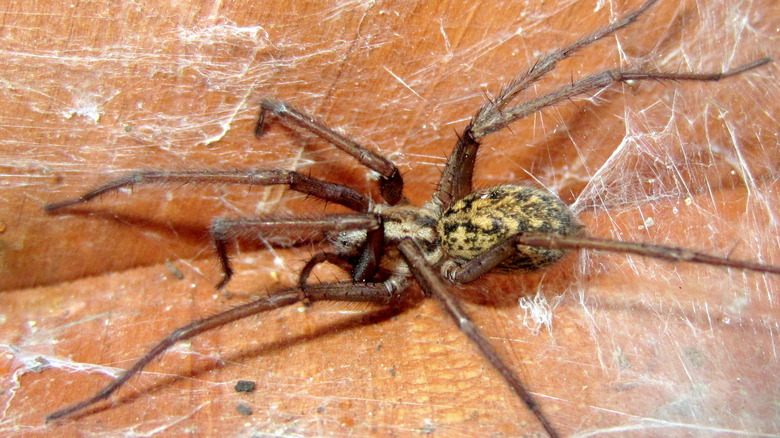How To Spot The Difference Between A Wolf Spider And A Hobo Spider
Watching brown spiders quickly traverse your floor or hide in dark corners can be scary, especially if you think they're poisonous. So, it's no wonder you would want to ID these commonly seen house spiders, like wolf and hobo. While at first glance, you might think these spiders have joined the twinning trend, it's far from the truth. Although occasionally sharing brown hues, these spindly creatures differ in size, appearance, behavior, and location. Wolf spiders have hobo spiders beat in size with quite a bit of hair like tarantulas.
However, the biggest differentiator is their behavior. Wolf spiders have soundly rejected their brethren's innate spinning abilities to build burrows to trap their prey, whereas hobos have given their webs a funnel spin that tapers down at one end. But if you're wondering who's more dangerous, then Hobo spiders will come on top — not because they're believed to cause necrosis (they don't, according to Utah State University), but because they're more belligerent and bite more painfully than the coyer wolf spiders. However, the bites from both arachnids are non-life-threatening.
Identifying wolf spiders
Named so after their wolf-like hunting habits, these eight-legged predators prefer pursuing their kill deep into the night rather than ensnaring them in webs as hobo spiders would. Still, some choose to play the long game, waiting for unwitting insects to walk into their lairs.
Measuring almost 2 inches, wolf spiders are relatively big and come in a range of shades, including classic tan and gray. However, they're easiest to differentiate from their eye arrangement. Wolf spiders have a pair of large razor-sharp reflective eyes on both the side of the head and the front, followed by another four eyes down below that make night-hunting a breeze.
Another tell-tale sign is the thick fur covering their stout bodies, unlike the finer hair on hobo spiders. You may even find their newly hatched babies on their backsides. Moreover, wolf spiders usually remain outdoors unless chasing after prey or planning to overwinter in warmer spots. So, you're unlikely to see them inside your home. But if you find them in your garden, rather than getting rid of wolf spiders, consider keeping them, as they love gorging on crop pests.
Pinpointing hobo spiders' presence
In contrast, hobo spiders are typically brown, swift-running creatures that adore weaving open-ended, tube-like webs to play with their catch. However, their silk nets may connect to a deeper, protected spot through a tunnel. Measuring no more than 1 ½ inches, they're smaller than wolf spiders, albeit with a stingier bite. Their oblong bodies are crisscrossed with a few fine hairs that make their otherwise vague V-shaped markings prominent. Unlike the three rows of eyes found on wolf spiders, hobo spiders support the typical eight-eye formation with four equally sized small eyes distributed across two rows each. However, their vision clarity is nothing to write home about, which probably explains their aggression.
As opposed to wolf spiders, hobo spiders prefer lurking indoors—the darker the area, the better. Moreover, they lack climbing prowess, finding it challenging to crawl on painted walls and attics, sticking to the ground level. So, unless it's cold, rest assured the brown critter lurking in your basement and underneath furniture is a hobo spider.


